Module 3 - Benjamin-Mills
Module 3 - Benjamin-Mills
Module 3 - Benjamin-Mills
Create successful ePaper yourself
Turn your PDF publications into a flip-book with our unique Google optimized e-Paper software.
DP2.2<br />
Taking nylon apart<br />
In this experiment you are going to convert some<br />
nylon-6,6 polymer back into its original di-acid and<br />
di-amine. The linkages in the nylon are broken down<br />
by hydrolysis using sulphuric acid. This activity will<br />
allow you to improve your skill in carrying out an<br />
organic reaction safely. You will learn how to<br />
purify an organic solid and how to measure its<br />
melting point.<br />
Requirements<br />
● nylon-6,6 granules (2 g)<br />
●<br />
●<br />
100 cm 3 boiling flask<br />
condenser<br />
● sulphuric acid, 30% (35 cm 3 )<br />
● 250 cm 3 conical flasks (2)<br />
●<br />
●<br />
watch-glass<br />
thin-walled capillary tubes (or melting-point tubes)<br />
● melting-point apparatus for use up to 150 °C<br />
●<br />
apparatus for vacuum filtration<br />
● saturated sodium hydrogencarbonate solution (20 cm 3 )<br />
sodium hydroxide solution<br />
sulphuric acid<br />
CARE Eye protection must<br />
be worn throughout.<br />
CORROSIVE<br />
CORROSIVE<br />
WEAR EYE<br />
PROTECTION<br />
● sodium hydroxide solution, 2 mol dm –3 (5 cm 3 )<br />
●<br />
●<br />
●<br />
100 cm 3 measuring cylinder<br />
ice<br />
electric heating mantle<br />
● 250 cm 3 beakers (2)<br />
CARE Sulphuric acid of this<br />
concentration is very corrosive.<br />
●<br />
●<br />
10cm 3 measuring cylinder<br />
Universal Indicator paper<br />
Introduction<br />
If you did Activity DP2.1 you will have made a nylon from its monomers by<br />
condensation polymerisation. A reaction like this, in which a new substance is<br />
made from simpler substances, is called a synthesis.<br />
The reverse process, in which a large molecule is broken down into simpler<br />
molecules, is called a degradation. This type of reaction is often used by<br />
chemists to find out about the composition of substances. If they can identify<br />
the degradation products, they may be able to work out the structure of the<br />
original compound.<br />
The amide linkages in nylon can be hydrolysed (split by water) to give the<br />
parent di-acid and di-amine. The reaction with water is very slow indeed, but it can<br />
be speeded up by carrying out the hydrolysis in acid solution (acid hydrolysis).<br />
You will use moderately concentrated sulphuric acid (about 5.5 mol dm –3 ) for<br />
the hydrolysis.<br />
What you do<br />
Part 1: Breaking down the nylon<br />
1 Place 2 g of nylon-6,6 granules into a 100 cm 3 flask to which a reflux<br />
condenser can be attached.<br />
2 Pour 35 cm 3 of 30% sulphuric acid into the flask. (CARE Sulphuric acid of this<br />
concentration is very corrosive.) Fit the condenser to the flask (Figure 1).<br />
3 Place the reaction flask and condenser in the heating mantle. Heat the<br />
reaction mixture under reflux for about 3 hours. (This technique is used<br />
when you want to heat reactants for some time, but not lose either the<br />
reactants or the products by evaporation.) Add a few boiling chips to help<br />
the mixture boil smoothly.<br />
The nylon will all have dissolved after about 45 minutes, but you should<br />
carry on heating to complete the degradation.<br />
condenser<br />
water in<br />
nylon-6,6<br />
granules +<br />
sulphuric<br />
acid<br />
HEAT<br />
Figure 1 Breaking down the nylon<br />
water out<br />
„ Salters Advanced Chemistry 2000 – see Copyright restrictions<br />
163



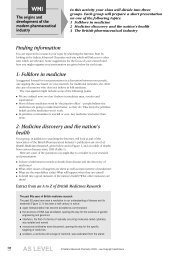
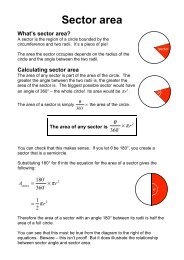
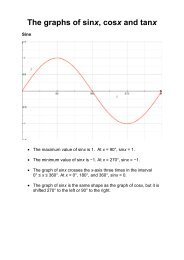


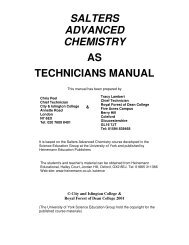



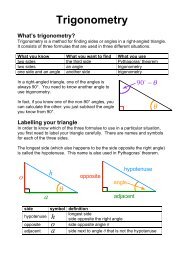
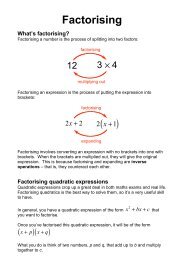
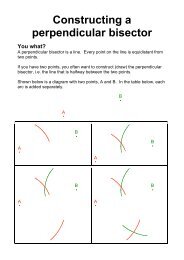


![ISI Web of Knowledge [v.4.10] - All Databases Results - Benjamin-Mills](https://img.yumpu.com/39253071/1/184x260/isi-web-of-knowledge-v410-all-databases-results-benjamin-mills.jpg?quality=85)